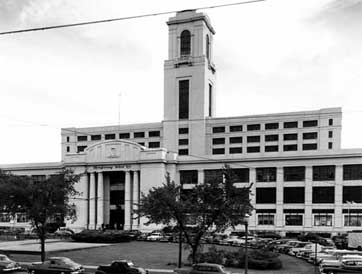Difference between revisions of "Montgomery Wards"
(New page: Image:Monkeywarts.jpg ---- This page is still under construction. -SVC Part of Minneapolis/St. Paul, MN: 100 Queer Places in Minnesota History, (1860-1969), (1969-2010)) |
(table) |
||
| Line 1: | Line 1: | ||
| − | [[Image:Monkeywarts.jpg]] | + | <div style="text-align: center;"> |
| + | '''University Avenue and Hamline Avenue, St. Paul, MN''' | ||
| + | </div> | ||
| + | |||
| + | |||
| + | |||
| + | |||
| + | The name may fall on deaf ears for those of the internet generation, yet Montgomery Wards is a powerhouse in the history of American retailing. Stretching coast to coast long before Wal-Mart, Target, or other big-box retailers existed, Americans across the nation fondly remember Montgomery Wards as a place to find anything. | ||
| + | |||
| + | |||
| + | The company was first to issue a mail-order catalog—a veritable book that offered everything from toys to furniture to entire houses. Upon receiving the catalog, customers simply filled out a form, mailed it with payment, and awaited a shipment of their desired items. Catalogs were shipped to even the most remote American families—the now-defunct company helped to decentralize goods distribution and to spread consumerism beyond urban centers. | ||
| + | |||
| + | |||
| + | |||
| + | {| {{prettytable}} | ||
| + | ! | ||
| + | ! | ||
| + | |- | ||
| + | | [[Image:Monkeywarts.jpg]] Mongotmer Wards on University Avenue, courtesy of the Minnesota Historical Society. | ||
| + | | St. Paul’s Montgomery Ward building was the tallest structure between downtown Minneapolis and downtown St. Paul—the building was a reflection of the Sears and Roebuck building (now the Midtown Exchange) on Lake Street in Minneapolis. | ||
| + | |||
| + | |||
| + | |||
| + | |||
| + | Like Sears, “Wards” used its massive building as both a retail store and a warehouse to store mail-order goods awaiting shipment The two cities often offer slightly varied reflections of remarkably similar places. | ||
| + | |} | ||
| + | |||
| + | |||
| + | |||
| + | Along with many other sites in the queer history of St. Paul, Montgomery Wards was part of an underground network of queer male cruising. Men met and engaged in furtive sexual activity in the “Wards” toilets long before the [[Town House Bar]] opened across the street in 1969. Like department stores, Wards was an enormous place of constant activity. Unlike high-end department stores, the inexpensive nature of the retailer likely permitted poor men to participate. | ||
| + | |||
| + | |||
| + | The advent of big-box retailing spelled doom for mail-order catalog companies in the 1980s. With a regrettable lack of foresight, The City of St. Paul demolished the behemoth structure in 1996 and replaced the landmark with Montgomery Wards’ successor—Wal-Mart. | ||
| + | |||
---- | ---- | ||
| + | |||
This page is still under construction. -SVC | This page is still under construction. -SVC | ||
Part of [[Minneapolis/St. Paul, MN: 100 Queer Places in Minnesota History, (1860-1969), (1969-2010)]] | Part of [[Minneapolis/St. Paul, MN: 100 Queer Places in Minnesota History, (1860-1969), (1969-2010)]] | ||
Revision as of 13:59, 23 March 2010
University Avenue and Hamline Avenue, St. Paul, MN
The name may fall on deaf ears for those of the internet generation, yet Montgomery Wards is a powerhouse in the history of American retailing. Stretching coast to coast long before Wal-Mart, Target, or other big-box retailers existed, Americans across the nation fondly remember Montgomery Wards as a place to find anything.
The company was first to issue a mail-order catalog—a veritable book that offered everything from toys to furniture to entire houses. Upon receiving the catalog, customers simply filled out a form, mailed it with payment, and awaited a shipment of their desired items. Catalogs were shipped to even the most remote American families—the now-defunct company helped to decentralize goods distribution and to spread consumerism beyond urban centers.
Along with many other sites in the queer history of St. Paul, Montgomery Wards was part of an underground network of queer male cruising. Men met and engaged in furtive sexual activity in the “Wards” toilets long before the Town House Bar opened across the street in 1969. Like department stores, Wards was an enormous place of constant activity. Unlike high-end department stores, the inexpensive nature of the retailer likely permitted poor men to participate.
The advent of big-box retailing spelled doom for mail-order catalog companies in the 1980s. With a regrettable lack of foresight, The City of St. Paul demolished the behemoth structure in 1996 and replaced the landmark with Montgomery Wards’ successor—Wal-Mart.
This page is still under construction. -SVC
Part of Minneapolis/St. Paul, MN: 100 Queer Places in Minnesota History, (1860-1969), (1969-2010)
